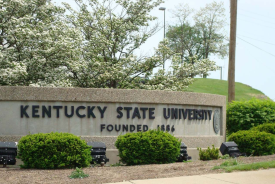A new study has found evidence that Europe's industrial age and the soot it produced brought about an abrupt retreat of glaciers in the 1860s, Nature reported.
Europe's factory smokestacks and their black smog caused a quick end to a period known as the Little Ice Age, which began around the thirteenth century. The relatively cool period encouraged some 4,000 small and large Alpine glaciers, but the European industrial age pushed them out around the mid-nineteenth century.
Today, the volume of those Alpine glaciers is half what it was at its peak. Many scientists agree the Little Ice Age ended about 1850, but climate records suggested it should not have ended until early in the 20th century.
"Something gnawed on the glaciers that climate records don't capture," says Georg Kaser, a glaciologist at the University of Innsbruck in Austria and a research member of the team that published the study Tuesday in Proceedings of the National Academy of Sciences. "A strong decline in winter snowfall was often assumed to be the culprit," he says. "But from all that we know, no such decline occurred."
The study was led by NASA and was co-authored by University of California (UC)-Davis researcher Richard A. VanCuren, an expert in air particles. He believes the study has uncovered why the Alpine glaciers retreated so quickly.
Lead author Thomas Painter, a snow and ice scientist at NASA's Jet Propulsion Laboratory (JPL) in Pasadena, Calif., agreed.
"Before now, most scientists have believed the end of the Little Ice Age in the 1800s was due to a natural climatic shift, distinct and well before emissions of carbon dioxide reached levels that could start to influence climate and glaciers in the 20th century," Painter said in a UC-Davis news release.
To determine levels of air pollution when the glaciers began to retreat, the researchers drilled into the ice cores of the Alpine glaciers. Using computer models, the team figured out how the soot particles settled in the lower surfaces of the glaciers.
"It's an ongoing concern - for the melting of the glaciers in the Himalayas, for reduced duration of the snowpack in the Sierra Nevada and Rocky Mountains and the impact that has on water supplies, as well as the more rapid melting of ice in the Arctic and in Greenland," VanCuren said. "We've accepted the idea that humans have been modifying the atmosphere in terms of carbon dioxide, but the effect of soot has not been very well dealt with in terms of its long-term effect."
© 2025 University Herald, All rights reserved. Do not reproduce without permission.








